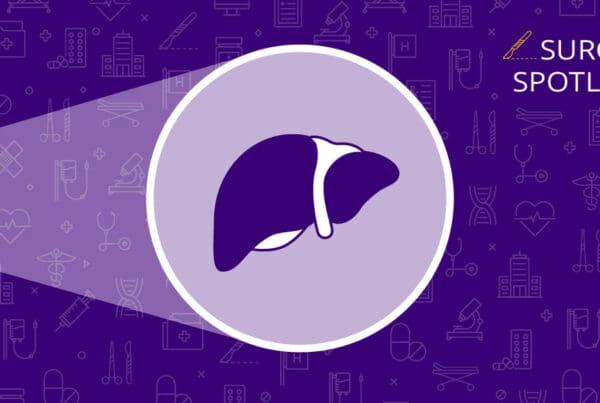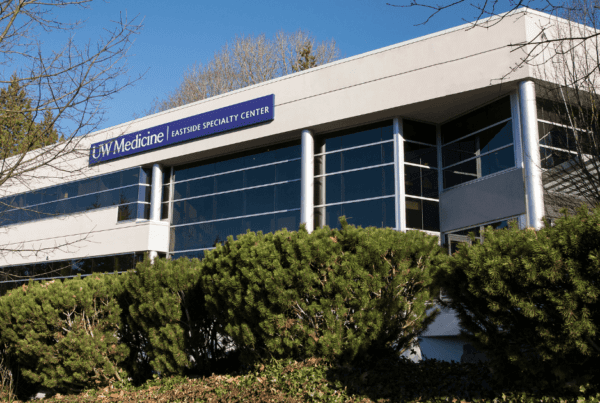Highlights | An even safer way to have your back
- Endoscopic spine surgery lessens tissue damage, hospital stay and patient recovery time.
- It also makes surgeons’ jobs easier.
- Many conditions can be treated endoscopically, from herniated discs to fractures to spinal cord compressions.
- Endoscopic spine surgeries help to avoid fusion surgeries in many patients.
- UW Medicine is the only place in the US offering a comprehensive endoscopic spine program.
Surgery has come a long way since the days of operating on awake patients without anesthesia (yikes). No procedure is a better example of surgical innovation than endoscopic surgery, which makes operating easier for surgeons and recovery time significantly shorter for patients.
And yes, endoscopic spine surgery exists. It isn’t as utilized a technique in the US as it is in other countries, such as Asia, but that’s not for lack of effectiveness or safety.
“We do very little harm with these surgeries. That’s what you have an oath to do as a doctor,” says Christoph Hofstetter, MD, PhD, a neurosurgeon who specializes in complex spine surgeries.
UW Medicine is an international leader in endoscopic spine surgery and the only place in the US offering a comprehensive endoscopic spine program. Around half of the spine surgeries Hofstetter does are endoscopic. He and other UW Medicine doctors also train fellows in the technique — the program was the first of its kind in the country.
The benefits of endoscopic spine surgery
Endoscopic spine surgery isn’t an option for every case, but when it is, it has benefits for both the patient and the surgeon.
Minimal tissue damage and blood loss, minimized pain, little to no hospital stay, decreased infection risk and quicker recovery times are some of the benefits that patients may experience with endoscopic surgery.
For surgeons, the endoscope and its camera allow for a clearer view of the surgical site and heightened precision while operating. Since the incision is so small, there is usually little to no bleeding, which makes seeing the operative field much easier. Using the endoscope also involves constant irrigation of the surgical site, flushing out any debris. In a recent publication, Hofstetter and colleagues showed that constant irrigation during endoscopic spine surgery reduces the risk of infections sixteen-fold compared to traditional spine surgery.
“Endoscopic patients tend to do better overall than patients who have other minimally invasive procedures, and they do better overall than patients who have open surgery,” Hofstetter says. “Eventually, we’re going to get to that place where we’re mostly doing only endoscopic surgeries.”
What getting endoscopic spine surgery is like
Hofstetter treats a range of spinal conditions with endoscopic surgery, including lumbar and thoracic herniated discs, spinal stenosis, mild deformity corrections and more.
Whether a patient is a candidate depends on many factors that Hofstetter discusses with them during pre-op visits. For some spine problems such as trauma, severe scoliosis, and complex revision surgeries, Hofstetter says he typically prefers to use complex traditional surgical techniques. But, even in these patients, adding some endoscopic techniques can improve the outcome.
Hofstetter usually meets with patients a week before their scheduled surgery to discuss the details of the procedure. Patients have access to an app where they can send questions to their surgeon and care team leading up to the day of the procedure.
Surgery is not an all-day event. Each procedure typically takes one to three hours, Hofstetter says, and most patients can go home within an hour or two of waking up.
“They’re usually home before I start my next surgery,” he says.
Some people, especially those who have radiating pain, often feel better immediately upon awakening.
“I had a patient cry after the procedure because he could move his neck for the first time in 20 years,” Hofstetter says.
People will have to take it easy at first when they return home, but healing is usually faster, and post-op appointments can often be done virtually. Complications are rare, but when they do happen, they are usually something like a minor dura mater tear that may extend someone’s recovery time a bit but is not dangerous.
Expanding endoscopic techniques
As a leading expert in the field, Hofstetter is always looking for ways to further advance endoscopic techniques. His hope is that the technique will advance enough that more of the procedures can be performed while requiring less anesthesia.
Along with teaching fellows and helping make endoscopic spine techniques more widely used in the US, Hofstetter travels and around the world to share his knowledge. Next up? Australia.
Though Hofstetter travels the world to teach about this type of procedure, he’s grateful he gets to practice here at UW Medicine.
“Patients and surgeon’s best interest are aligned here,” Hofstetter says. “When I see a patient, I can do exactly what I would do for my parents or family.”



